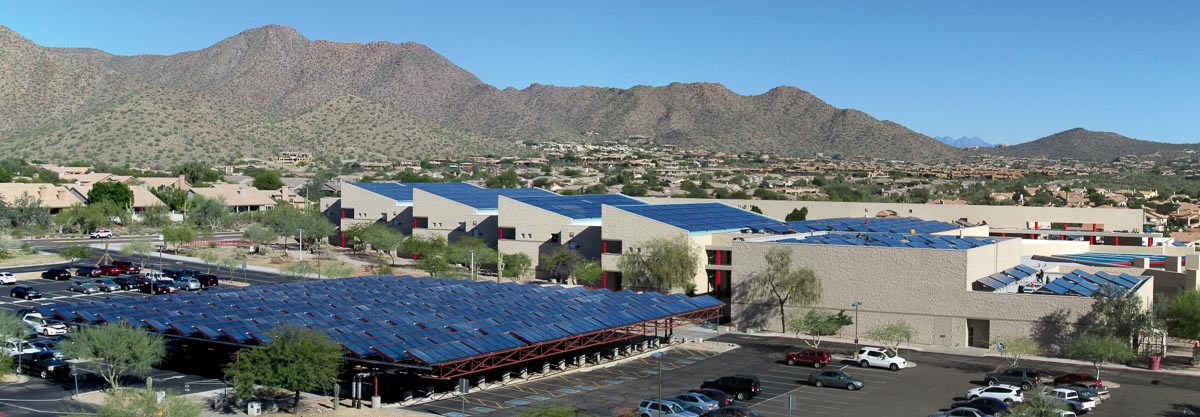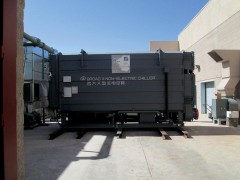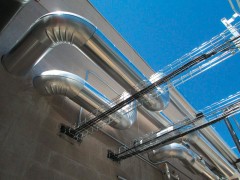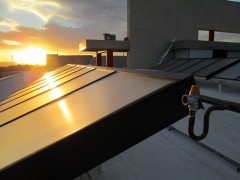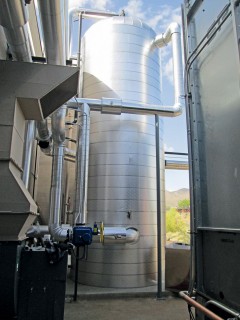Know-how for large solar heating facilities places S.O.L.I.D., a trailblazing Styrian firm, among world leaders in the solar field. S.O.L.I.D. plans, constructs and installs large-scale facilities for supplying hot water, space heating, supplying heat to district grids, solar process heat and cold, and thermal-driven chillers. The firm initiates and participates in numerous research and development projects. Many of the pioneering technologies it deploys around the world have been developed to the point of commercial viability within the framework of bmvit‘s technology programmes.
Solar-cooled school building
In 2014 the world‘s largest solar cooling facility was realized at Desert Mountain High School in Scottsdale, Arizona (USA). The High School is located in one of the hottest places in the USA; in summer temperatures here are often above 40 °C. The school building (accommodating 2,600 pupils) is equipped with a 4,865 m2 solar cooling facility with a chilling capacity of 1,750 kW.
In summer, when not all the rooms are in use, the solar system covers 100 % of demand, meeting the base load to prevent the building overheating. From autumn to early summer teaching periods coincide perfectly with the times when the solar system is operative. The existing conventional chillers are available as backups.
Ultra-efficient flat-plate 12.5 m2 collectors are used throughout. They are arranged over a total area of 1,500 m2 so as to provide shade for the parking lot; a further 1,300 m2 are mounted parallel to sloped roofs, while the remaining collectors are installed on flat roofs. The heat is delivered to the plant room via insulated pipelines. The collector loop is directly connected to the storage vessel and the chiller, without a heat exchanger. As energy is extracted throughout, the existing 30,000 l storage vessel acts only as a hydraulic balancer. At full load circulation is completed in less than 30 minutes.
The lithium-bromide chiller, with a capacity of 1,750 kW, operates at full power for several hours around midday, cooling the reflux from the building cooling facility. In the morning and evening the chiller is supplied at lower temperatures, from 65 to 75 °C, helping to cool the building at partial load.
Release of the power grids
The solar cooling system not only lowers electricity consumption but also helps to release the power grids, specifically at peak demand times. During heat-waves in this climatic zone more than 75 % of power consumption goes exclusively on cooling. The regional electricity utility, Arizona Public Service (APS), has grasped the advantages of solar cooling and supports the project. A special amount per kWh of solar heat is payed to the plant operator, invoiced quarterly over a ten-year period.
Solar cooling/Desert Mountain High School:
Collector area: 4,865 m2 HT collectors
Hot-water storage vessel: 34.5 m3
Chiller: 1,750 kW LiBr
Cooling Tower: about 4,250 kW
Investment costs: about 10 Mio. USD
